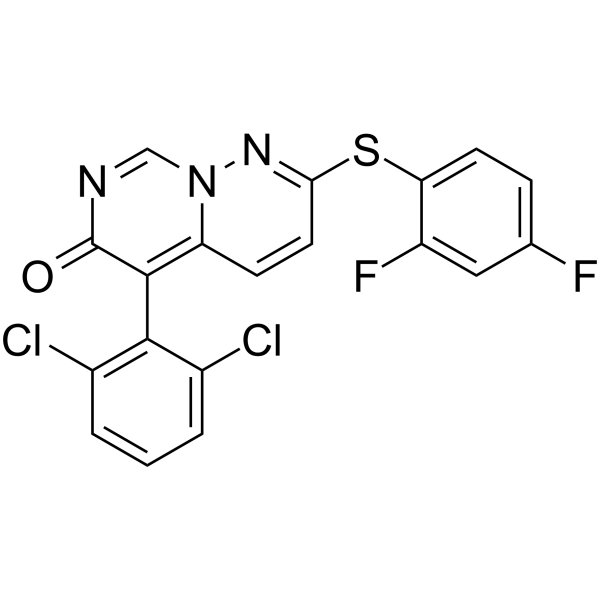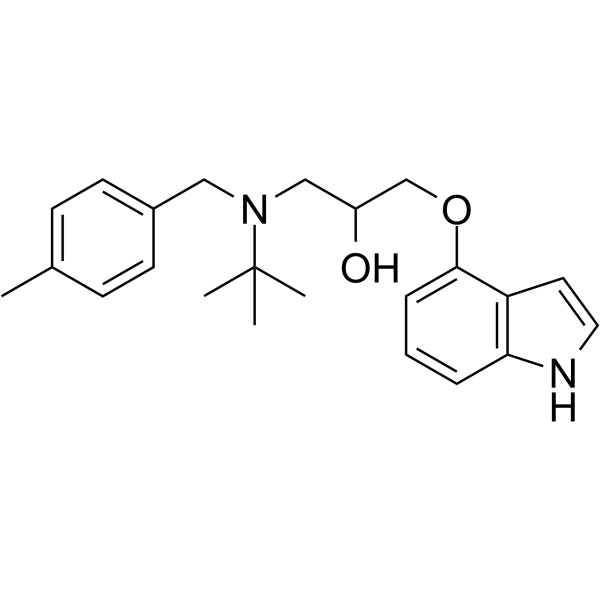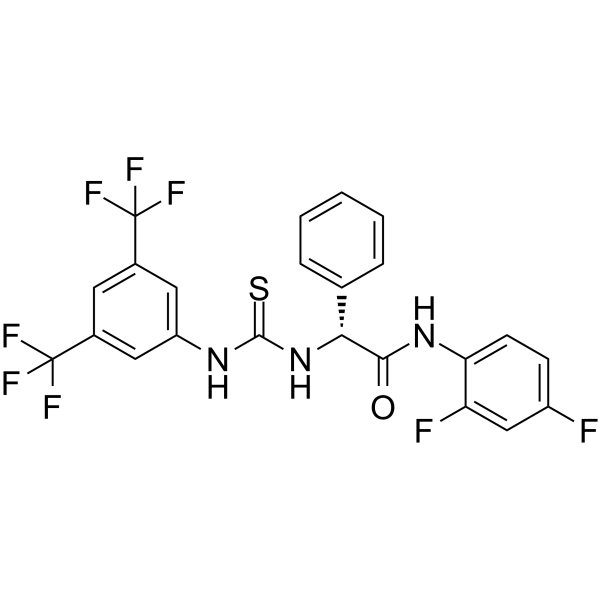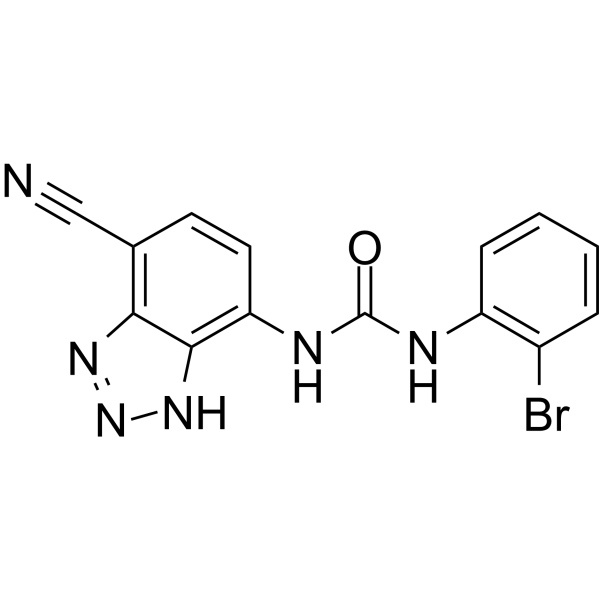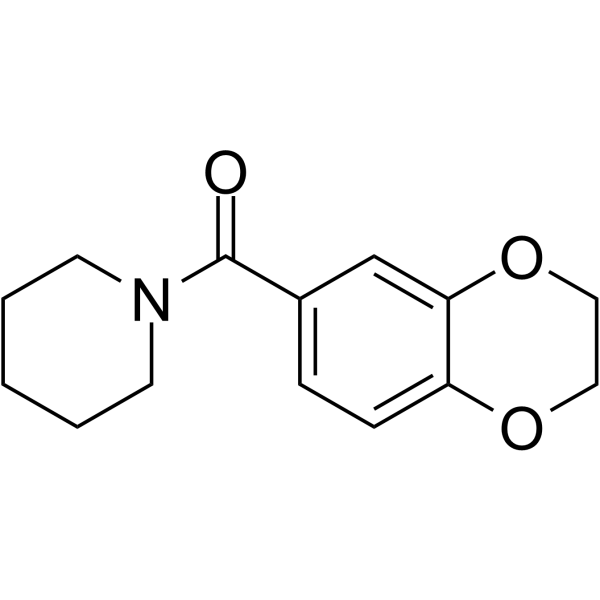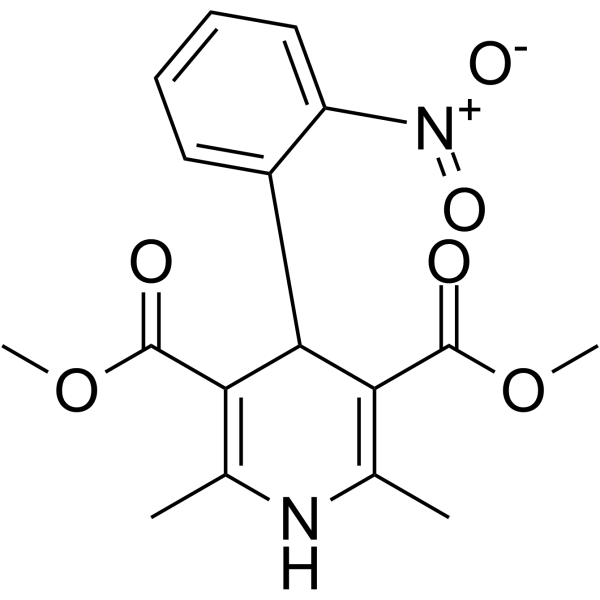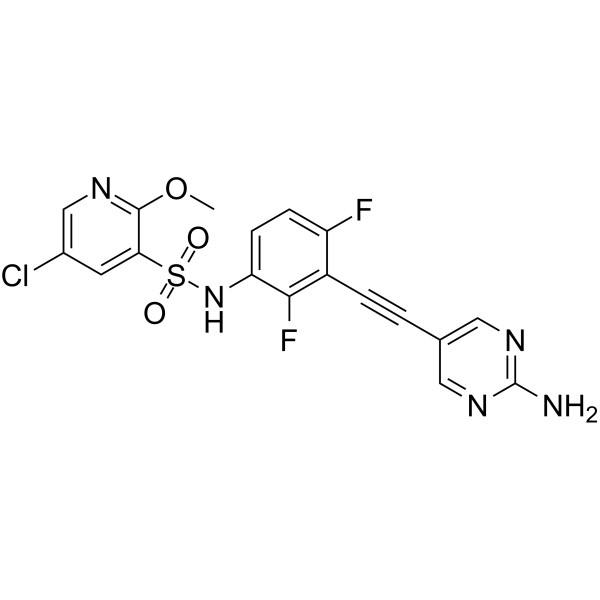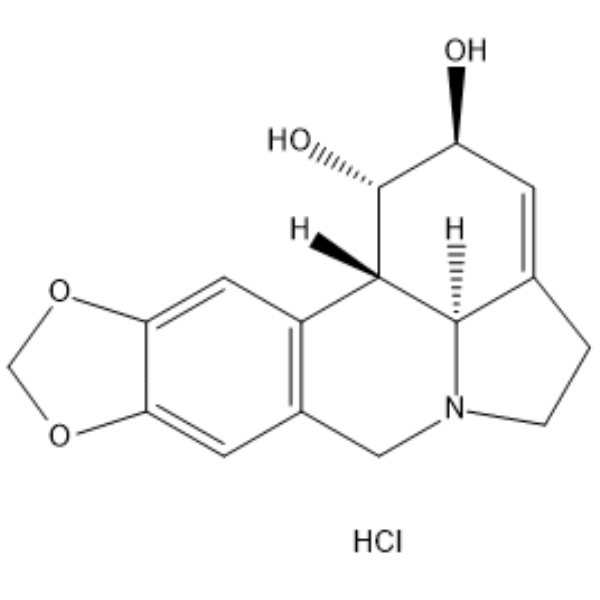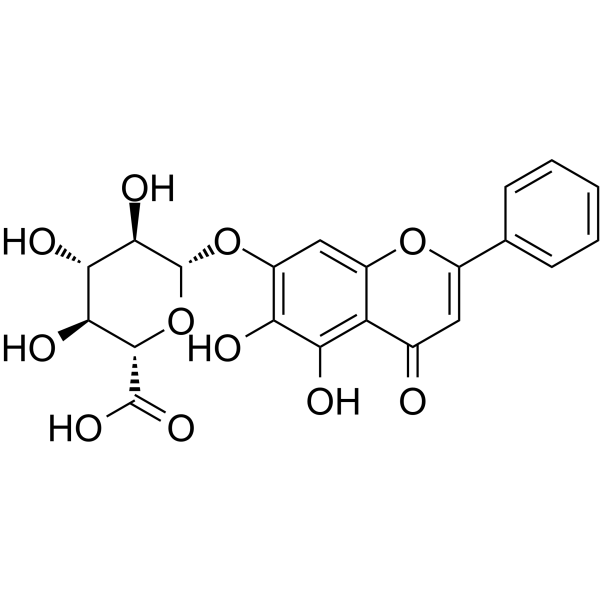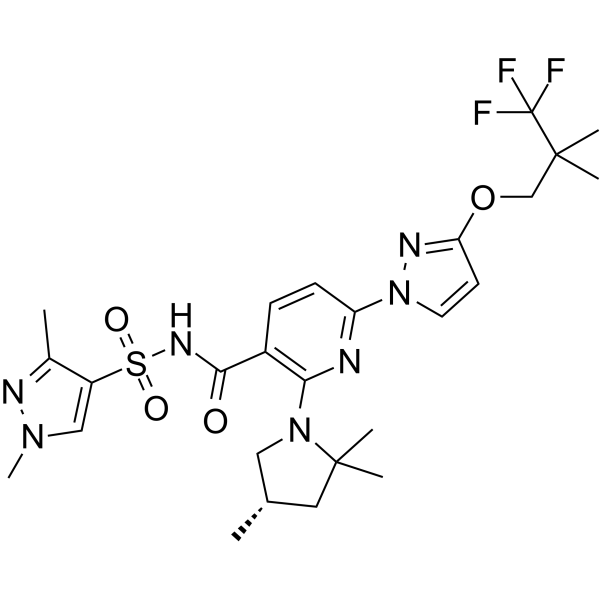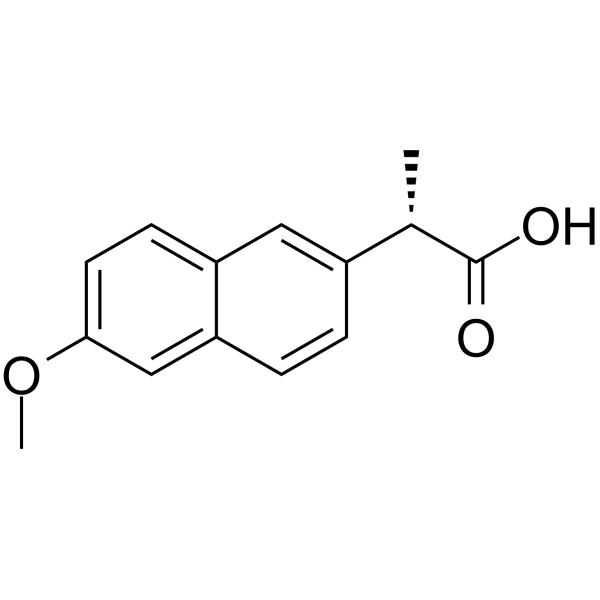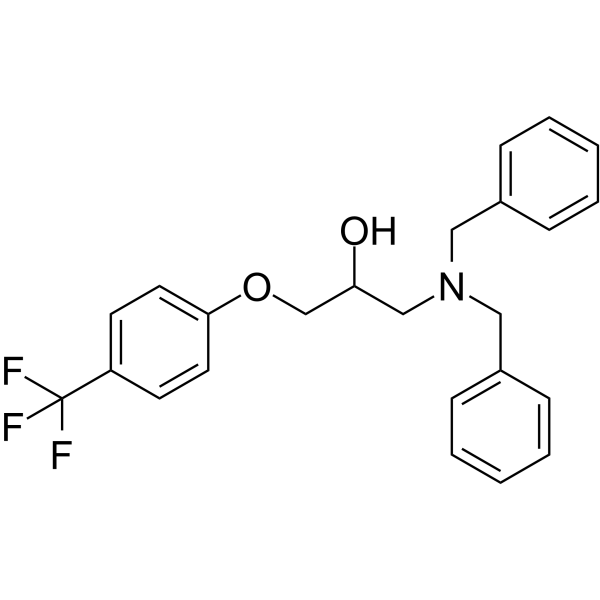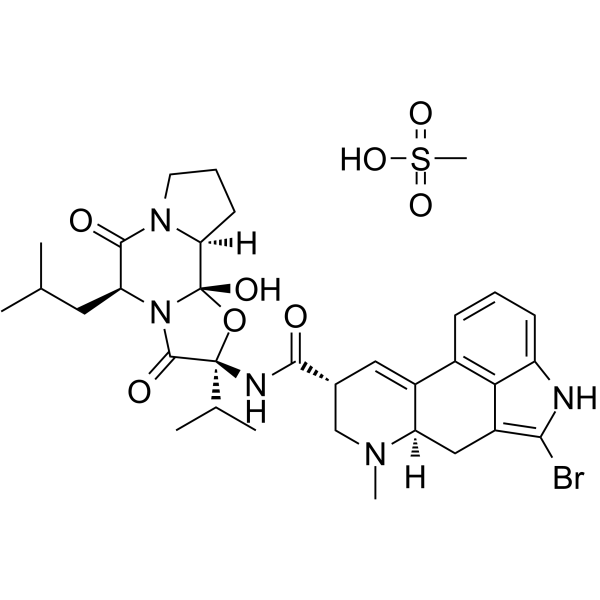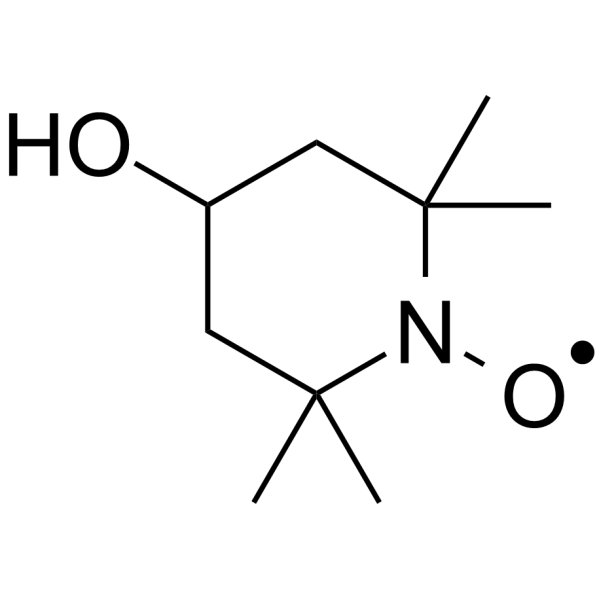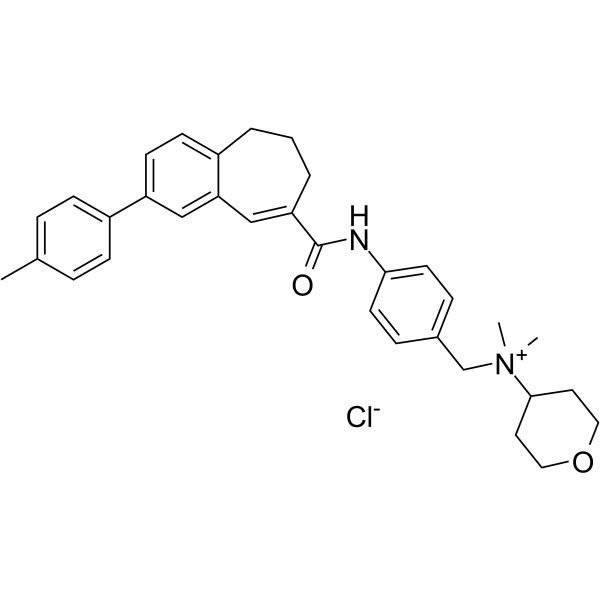|
BP12558
|
Neflamapimod
|
|
|
|
|
VX-745, a specific and effective inhibitor of p38α(IC50=10 nM), is 22-fold greater specificity against p38β and no inhibition activity to p38γ.
|
|
BP12559
|
SR-18292
|
|
|
|
|
SR-18292 is a PPAR gamma coactivator-1α (PGC-1α) inhibitor, which increases PGC-1α acetylation, suppresses gluconeogenic gene expression and reduces glucose production in hepatocytes.
|
|
BP12560
|
BL-918
|
|
|
|
|
BL-918 is a potent activator of UNC-51-like kinase 1 (ULK1) with an EC50 of 24.14 nM.
|
|
BP12561
|
SB-265610
|
|
|
|
|
SB-265610 is a nonpeptide and allosteric CXCR2 antagonist. SB-265610 blocks rat cytokine-induced neutrophil chemoattractant-1 (CINC-1)-induced calcium mobilization and neutrophil chemotaxis (IC50s: 3.7 nM and 70 nM, respectively).
|
|
BP12562
|
CX546
|
|
|
|
|
CX546 is an AMPA receptor modulator. CX546 enhances cognitive function in rats. It has also been proposed as a treatment for schizophrenia.
|
|
BP12563
|
LIT927
|
|
|
|
|
LIT-927 is an orally active CXCL12 neutraligand (Ki: 267 nM for CXCL12 binding to CXCR4).
|
|
BP12564
|
Nifedipine
|
|
|
|
|
Nifedipine is a dihydropyridine calcium channel blocking agent. Nifedipine inhibits the transmembrane influx of extracellular calcium ions into myocardial and vascular smooth muscle cells, causing dilatation of the main coronary and systemic arteries and decreasing myocardial contractility. This agent also inhibits the drug efflux pump P-glycoprotein which is overexpressed in some multi-drug resistant tumors and may improve the efficacy of some antineoplastic agents.
|
|
BP12565
|
GCN2iB
|
|
|
|
|
GCN2iB is an ATP-competitive inhibitor of general control nonderepressible 2 (GCN2) with an IC50 of 2.4 nM.
|
|
BP12566
|
Lycorine hydrochloride
|
|
|
|
|
Lycorine (hydrochloride) is VE-cadherin inhibitor,and has IC50 of 1.2μM in Hey1B cell.It is an HCV inhibitor with strong activity.
|
|
BP12567
|
Baicalin
|
|
|
|
|
Baicalin is a prolyl endopeptidase inhibitor isolated from scutellaria baicalensis, with antioxidant, anti-tumor, anti-HIV properties.
|
|
BP12568
|
Tigecycline
|
|
|
|
|
Tigecycline is a broad-spectrum glycylcycline antibiotic derived from tetracycline. Tigecycline binds to the 30S ribosomal subunit, thereby interfering with the binding of aminoacyl-tRNA to the mRNA-ribosome complex.
|
|
BP12569
|
Elexacaftor
|
|
|
|
|
Elexacaftor is a modulator of cystic fibrosis transmembrane conductance regulator (CFTR) and it also facilitates the processing and trafficking of CFTR to increase the amount of CFTR at the cell surface.
|
|
BP12570
|
Naproxen
|
|
|
|
|
Naproxen is a propionic acid derivative and a non-steroidal anti-inflammatory drug (NSAID) with anti-inflammatory, antipyretic and analgesic activities.
|
|
BP12571
|
BC1618
|
|
|
|
|
BC1618 is an orally active Fbxo48 inhibitory compound, stimulates Ampk-dependent signaling. It promotes mitochondrial fission, facilitates autophagy and improves hepatic insulin sensitivity.
|
|
BP12572
|
Bromocriptine mesylate
|
|
|
|
|
Bromocriptine is a potent dopamine receptor agonist that binds the D2 receptor with highest affinity (Ki = 2.5 nM)
|
|
BP12573
|
Tempol
|
|
|
|
|
Tempol is a general superoxide dismutase (SOD)-mimetic drug that efficiently neutralizes reactive oxygen species (ROS).
|
|
BP12574
|
Eupatilin
|
|
|
|
|
Eupatilin, a flavone derived from Artemisia princepsPampanini, is a PPARα agonist, with pharmacological activity.
|
|
BP12575
|
Silibinin
|
|
|
|
|
Silibinin is the major active constituent of silymarin, a standardized extract of the milk thistle seeds, containing a mixture of flavonolignans consisting of silibinin, isosilibinin, silicristin, silidianin and others. Silibinin itself is a mixture of two diastereomers, silybin A and silybin B, in approximately equimolar ratio. Both in vitro and animal research suggest that silibinin has hepatoprotective (antihepatotoxic) properties that protect liver cells against toxins. Silibinin has also demonstrated in vitro anti-cancer effects against human prostate adenocarcinoma cells, estrogen-dependent and -independent human breast carcinoma cells, human ectocervical carcinoma cells, human colon cancer cells, and both small and nonsmall human lung carcinoma cells.
|
|
BP12576
|
TAK-779
|
|
|
|
|
TAK-779 is an antagonist of chemokine receptor 5 (CCR5), CCR2b, and CXC chemokine receptor 3 (CXCR3).
|
|
BP12577
|
Indole-3-Glyoxylyl Chloride
|
|
|
|
|
Indole-3-Glyoxylyl Chloride is an organic compund with molecular fomula C10H6ClNO2.
|
